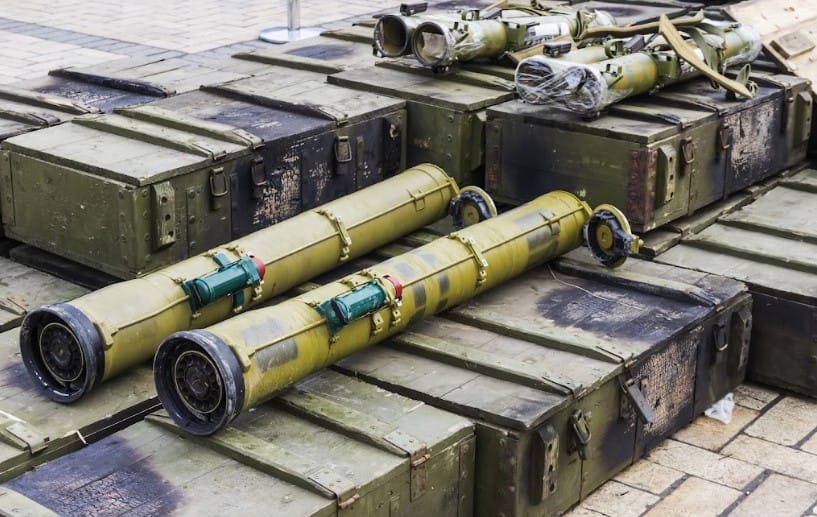 In 2008, Russia engaged in a military conflict with Georgia, resulting in the imposition of some sanctions. This event served as a test to gauge international response, but no substantial actions were taken by the rest of the world. Russia is involved in a similar situation with Ukraine, leading to sanctions being issued by the UN, USA, NATO, and EU. However, despite these sanctions, they invaded Ukraine in 2014 and are currently engaged in a “special operation” that has now extended into year 2. The sanctions this time were even more extreme. However, Russia has circumnavigated many of them by selling to other nations through a shadowy fleet of vessels. Grain gifts to Africa, weapons deals with North Korea, oil and grain and contractor deals with China and India, the list goes on and on. When the sanctions lose effectiveness, it gives rise to other reserve currencies and creates a multi-polar world where new alliances are formed.
Russia is already replenishing its foreign currency reserves with the Chinese Yuan. Already, Indian refineries are paying traders in the United Arab Emirates dirhams for Russian oil. When sanctions cease to work, new alliances and sides are established. Potential conflicts can escalate.
#2 – MORE HOT ZONES
In 2008, Russia engaged in a military conflict with Georgia, resulting in the imposition of some sanctions. This event served as a test to gauge international response, but no substantial actions were taken by the rest of the world. Russia is involved in a similar situation with Ukraine, leading to sanctions being issued by the UN, USA, NATO, and EU. However, despite these sanctions, they invaded Ukraine in 2014 and are currently engaged in a “special operation” that has now extended into year 2. The sanctions this time were even more extreme. However, Russia has circumnavigated many of them by selling to other nations through a shadowy fleet of vessels. Grain gifts to Africa, weapons deals with North Korea, oil and grain and contractor deals with China and India, the list goes on and on. When the sanctions lose effectiveness, it gives rise to other reserve currencies and creates a multi-polar world where new alliances are formed.
Russia is already replenishing its foreign currency reserves with the Chinese Yuan. Already, Indian refineries are paying traders in the United Arab Emirates dirhams for Russian oil. When sanctions cease to work, new alliances and sides are established. Potential conflicts can escalate.
#2 – MORE HOT ZONES
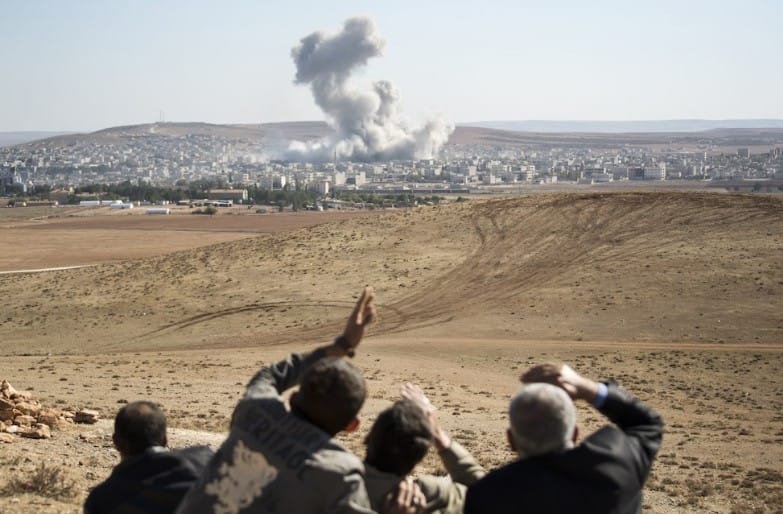 At any given time worldwide, there are numerous conflicts. Most don’t receive our attention. However, each of these minor conflicts is a pawn on a chessboard. They may not be growing into a global conflict, but they bring forces in global opposition to one another in close proximity. Russia and US forces are overtly and covertly present in Syria, Sudan, Libya, and several other countries worldwide.
Wherever oppositionally aligned superpowers are mutually deployed as consultants or peacekeepers, the potential for armed interaction exists. This is probably the hottest at the moment in Syria, where Pro-Iranian and Russian forces are threatening and attacking US-supported positions. One sure sign of World War III is an explosion of hot zones and their escalation of conflict.
#3 – PRIVATE MILITARY GROUPS
At any given time worldwide, there are numerous conflicts. Most don’t receive our attention. However, each of these minor conflicts is a pawn on a chessboard. They may not be growing into a global conflict, but they bring forces in global opposition to one another in close proximity. Russia and US forces are overtly and covertly present in Syria, Sudan, Libya, and several other countries worldwide.
Wherever oppositionally aligned superpowers are mutually deployed as consultants or peacekeepers, the potential for armed interaction exists. This is probably the hottest at the moment in Syria, where Pro-Iranian and Russian forces are threatening and attacking US-supported positions. One sure sign of World War III is an explosion of hot zones and their escalation of conflict.
#3 – PRIVATE MILITARY GROUPS
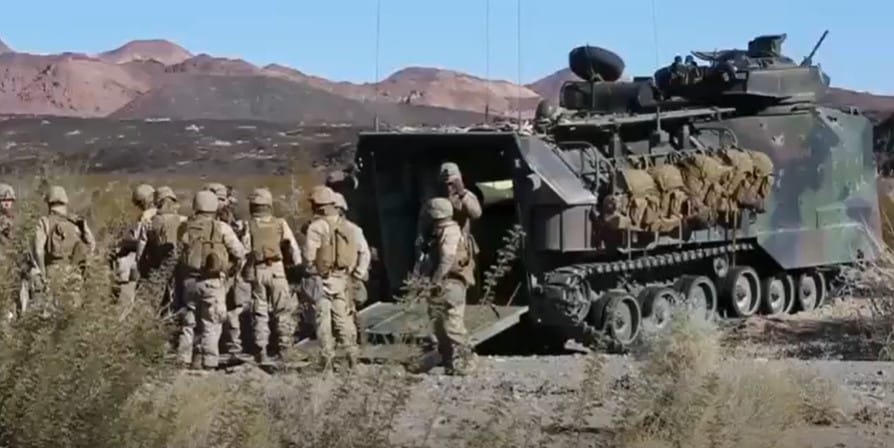 Believe it or not, wars have some generally accepted rules of engagement, like the Geneva Conventions. The way around these rules is by establishing a state-funded private military group. Academi, Wagner Group, Unity Resources Group, MVM Incorporated, and Asgaard are just a few of the many. These are militaries that function as loosely constructed corporations. Their profit comes from waging war, defending assets, or supporting other countries or rebel forces.
The problem with these is that even though they can be tied back to the governments and espionage agencies that created and funded them, the countries have a layer of plausible deniability. So we see these PMGs murdering, torturing, and plundering worldwide. We are also seeing these competing forces coming into closer proximity with each other and conducting operations in the same geographical space. It’s just a matter of time before oppositionally aligned PMGs come into direct conflict with each other and force countries to respond militarily with their standing armies.
#4 – NUCLEAR ANYTHING
Believe it or not, wars have some generally accepted rules of engagement, like the Geneva Conventions. The way around these rules is by establishing a state-funded private military group. Academi, Wagner Group, Unity Resources Group, MVM Incorporated, and Asgaard are just a few of the many. These are militaries that function as loosely constructed corporations. Their profit comes from waging war, defending assets, or supporting other countries or rebel forces.
The problem with these is that even though they can be tied back to the governments and espionage agencies that created and funded them, the countries have a layer of plausible deniability. So we see these PMGs murdering, torturing, and plundering worldwide. We are also seeing these competing forces coming into closer proximity with each other and conducting operations in the same geographical space. It’s just a matter of time before oppositionally aligned PMGs come into direct conflict with each other and force countries to respond militarily with their standing armies.
#4 – NUCLEAR ANYTHING
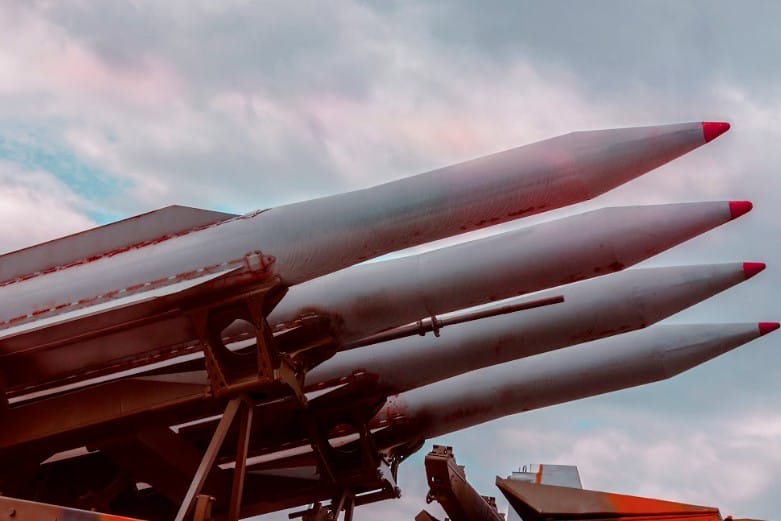 Nuclear warheads are still seen in the world as a line too far and not to be crossed. While we tend to see the only outcome of some countries using a nuclear warhead as a complete global nuclear exchange and the end of us all, there are other scenarios. If Russia uses a nuclear warhead not delivered via a missile, nuclear signatures must be established to trace it back to its source of origin. That takes time, while countries immediately go to their equivalent of Defcon-2. During that pressure cooker time, to prevent further launches by a hostile government, a high-altitude nuclear detonation from space, resulting in an EMP to wipe out electronics in a country, is possible. Such a counterattack is more challenging to pinpoint a country of origin, so the conflict can escalate rapidly from there and devolve into nuclear chaos. Whether it’s a leak from a nuclear power plant, a dirty bomb, or the detonation of a nuclear warhead, nuclear anything immediately pulls the entire world into World War III.
#5 – BORDERS & BOUNDARIES VIOLATED
Nuclear warheads are still seen in the world as a line too far and not to be crossed. While we tend to see the only outcome of some countries using a nuclear warhead as a complete global nuclear exchange and the end of us all, there are other scenarios. If Russia uses a nuclear warhead not delivered via a missile, nuclear signatures must be established to trace it back to its source of origin. That takes time, while countries immediately go to their equivalent of Defcon-2. During that pressure cooker time, to prevent further launches by a hostile government, a high-altitude nuclear detonation from space, resulting in an EMP to wipe out electronics in a country, is possible. Such a counterattack is more challenging to pinpoint a country of origin, so the conflict can escalate rapidly from there and devolve into nuclear chaos. Whether it’s a leak from a nuclear power plant, a dirty bomb, or the detonation of a nuclear warhead, nuclear anything immediately pulls the entire world into World War III.
#5 – BORDERS & BOUNDARIES VIOLATED
 Any invasion in our modern world is sure to bring a global response. Whether that’s China attacking Taiwan or a contested island owned by the Japanese or Russia invading Ukraine, or an escalation of the border war between China and India, these violations of accepted international borders and boundaries can pull the whole world into a conflict. The traditional way is with armed forces like Germany sending 20,000 troops into the Rhineland in 1936, but modern border and boundary violations are far more complex. Japan, South Korea, and China are in dispute over air space. Russia is attacking US drones in the international air space of the Black Sea. Fighters and bombers are violating air space in the Bering Strait and Syria. There are continued maritime disputes between China and every other country sharing a shoreline with the South China Sea and the Pacific Ocean. We have even seen spy balloons flying over the soverign territory of other countries.
Most of these incursions and infractions are testing response times, saber rattling, and posturing. Each of them, however, has the potential to draw forces into a conflict that could turn from a minor fire to a blazing wildfire in very little time. As forces realign themselves around the world, the potential for more significant conflict from their flexing of muscle increases. Watch for any major border or boundary violation as a potential catalyst for World War III.
#6 – ECONOMICS
Any invasion in our modern world is sure to bring a global response. Whether that’s China attacking Taiwan or a contested island owned by the Japanese or Russia invading Ukraine, or an escalation of the border war between China and India, these violations of accepted international borders and boundaries can pull the whole world into a conflict. The traditional way is with armed forces like Germany sending 20,000 troops into the Rhineland in 1936, but modern border and boundary violations are far more complex. Japan, South Korea, and China are in dispute over air space. Russia is attacking US drones in the international air space of the Black Sea. Fighters and bombers are violating air space in the Bering Strait and Syria. There are continued maritime disputes between China and every other country sharing a shoreline with the South China Sea and the Pacific Ocean. We have even seen spy balloons flying over the soverign territory of other countries.
Most of these incursions and infractions are testing response times, saber rattling, and posturing. Each of them, however, has the potential to draw forces into a conflict that could turn from a minor fire to a blazing wildfire in very little time. As forces realign themselves around the world, the potential for more significant conflict from their flexing of muscle increases. Watch for any major border or boundary violation as a potential catalyst for World War III.
#6 – ECONOMICS
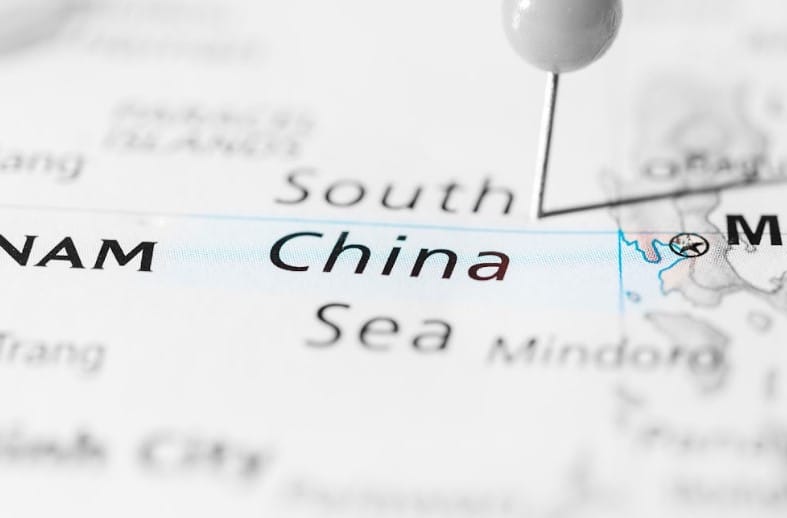 The only thing probably keeping the peace in the world right now boils down to simple economics. So long as China is dependent upon US consumers, so long as China and India both benefit from lucrative Russian grain, energy, and defense deals, so long as OPEC benefits from Russian oil, and so forth, relative peace is maintained. No country wants to rock the boat when it comes to their economies. That said, as BRICS develops and rolls out its own digital currency, as the Middle East continues to profit from Russian oil contributions, and as European countries continue to replace Russian energy with energy exported from the US, these power dynamics can swiftly change.
As these power dynamics change, global policies and alliances change. A China-Russia alliance without “limits” will create a very different world what we are currently living in today. Trade wars, tariffs, and sanctions can all lead to violations of longstanding treaties and alliances. The first volley in a World War is often economic, so it’s something to keep an eye on.
6 PLACES WHERE WORLD WAR III COULD HAPPEN
Here are some potential hot zone areas beyond Ukraine and the South China Sea where we could see a World War spin-up in a matter of weeks. I’m not going to cover Ukraine or the South China Sea because I cover both those areas quite extensively in other videos on this channel. The potential conflict between China and Japan is, at present, probably more concerning than China’s threat to Taiwan’s independence. I’m also not including potential areas that aren’t as hot right now, like Russia’s border with Finland or the Suwalki Corridor, which connects Belarus to Kaliningrad in Russia and would cut off Baltic States from NATO or the Bering Strait. These are all potential starting points for World War III, but they would require some build-up compared to the zones I am outlining here:
#1 – STRAIT OF HORMUZ
The only thing probably keeping the peace in the world right now boils down to simple economics. So long as China is dependent upon US consumers, so long as China and India both benefit from lucrative Russian grain, energy, and defense deals, so long as OPEC benefits from Russian oil, and so forth, relative peace is maintained. No country wants to rock the boat when it comes to their economies. That said, as BRICS develops and rolls out its own digital currency, as the Middle East continues to profit from Russian oil contributions, and as European countries continue to replace Russian energy with energy exported from the US, these power dynamics can swiftly change.
As these power dynamics change, global policies and alliances change. A China-Russia alliance without “limits” will create a very different world what we are currently living in today. Trade wars, tariffs, and sanctions can all lead to violations of longstanding treaties and alliances. The first volley in a World War is often economic, so it’s something to keep an eye on.
6 PLACES WHERE WORLD WAR III COULD HAPPEN
Here are some potential hot zone areas beyond Ukraine and the South China Sea where we could see a World War spin-up in a matter of weeks. I’m not going to cover Ukraine or the South China Sea because I cover both those areas quite extensively in other videos on this channel. The potential conflict between China and Japan is, at present, probably more concerning than China’s threat to Taiwan’s independence. I’m also not including potential areas that aren’t as hot right now, like Russia’s border with Finland or the Suwalki Corridor, which connects Belarus to Kaliningrad in Russia and would cut off Baltic States from NATO or the Bering Strait. These are all potential starting points for World War III, but they would require some build-up compared to the zones I am outlining here:
#1 – STRAIT OF HORMUZ
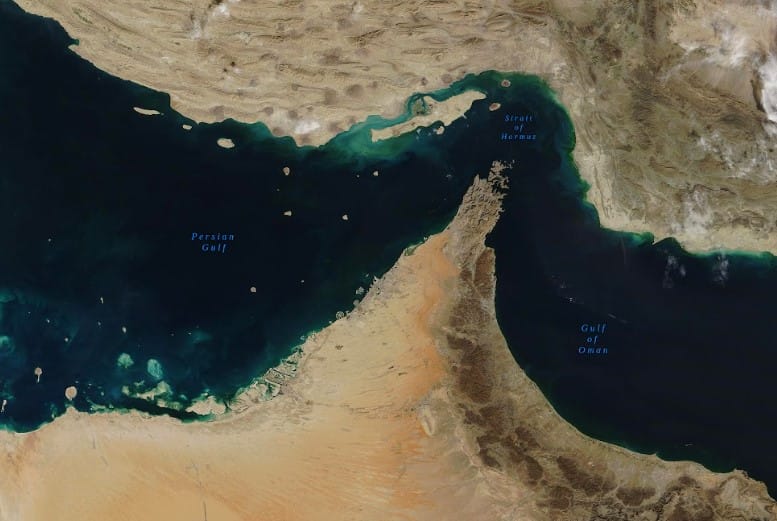 The Strait of Hormuz, known in Arabic as Madiq Bab Al Salam or the “door of peace,” is a narrow waterway connecting the Persian Gulf to the ocean. The countries bordering the Strait of Hormuz and the Persian Gulf include Iran, Oman, the United Arab Emirates, and Saudi Arabia. The strait is an important strategic location for international trade due to its significant role in facilitating the passage of approximately one-third of the world’s liquefied natural gas and nearly 25% of the total global oil consumption. The U.S. and Iran have had several minor conflicts since Operation Praying Mantis, a one-day battle against Iranian forces in retaliation for a US frigate striking a mine.
Even though conflicts are continually in these waters, Iran has recently begun seizing foreign vessels. On April 27, Iran seized the Marshall Islands-flagged Advantage Sweet in the Gulf of Oman while it was in transit. Subsequently, six days later, another ship, the Panama-flagged tanker Niovi, was seized by Iran as it departed a dry dock in Dubai. In early December, an Iranian patrol boat attempted to temporarily blind US Navy ships in the Strait of Hormuz by directing a spotlight towards them and crossing within a distance of 150 yards. Similarly, in August of last year, an Iranian vessel captured a crewless American military research vessel in the Gulf, but it was released after the deployment of a US Navy patrol boat and helicopter to the location.
With Iran’s overt support of Russia in the Ukraine war and Russia’s warming up to Iran as an adversary to the United States, a sudden escalation of the conflict in this zone may be inevitable.
#2 – GULF OF ADEN/RED SEA
The Strait of Hormuz, known in Arabic as Madiq Bab Al Salam or the “door of peace,” is a narrow waterway connecting the Persian Gulf to the ocean. The countries bordering the Strait of Hormuz and the Persian Gulf include Iran, Oman, the United Arab Emirates, and Saudi Arabia. The strait is an important strategic location for international trade due to its significant role in facilitating the passage of approximately one-third of the world’s liquefied natural gas and nearly 25% of the total global oil consumption. The U.S. and Iran have had several minor conflicts since Operation Praying Mantis, a one-day battle against Iranian forces in retaliation for a US frigate striking a mine.
Even though conflicts are continually in these waters, Iran has recently begun seizing foreign vessels. On April 27, Iran seized the Marshall Islands-flagged Advantage Sweet in the Gulf of Oman while it was in transit. Subsequently, six days later, another ship, the Panama-flagged tanker Niovi, was seized by Iran as it departed a dry dock in Dubai. In early December, an Iranian patrol boat attempted to temporarily blind US Navy ships in the Strait of Hormuz by directing a spotlight towards them and crossing within a distance of 150 yards. Similarly, in August of last year, an Iranian vessel captured a crewless American military research vessel in the Gulf, but it was released after the deployment of a US Navy patrol boat and helicopter to the location.
With Iran’s overt support of Russia in the Ukraine war and Russia’s warming up to Iran as an adversary to the United States, a sudden escalation of the conflict in this zone may be inevitable.
#2 – GULF OF ADEN/RED SEA
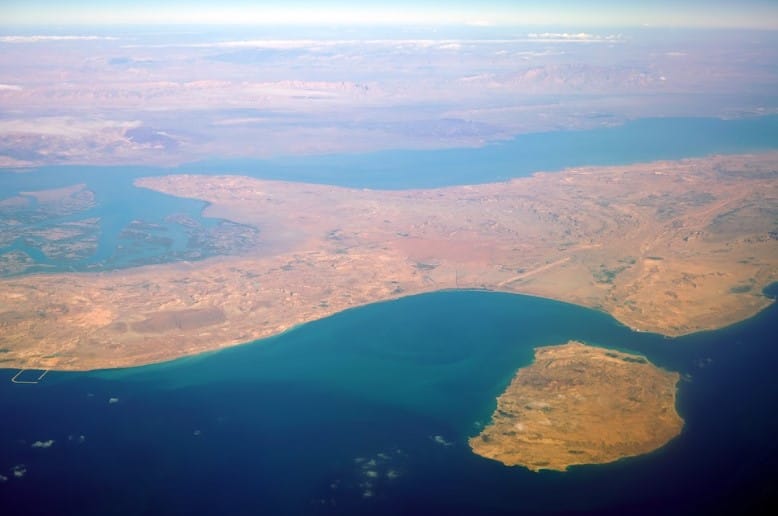 Probably the biggest threat in the past in the Gulf of Aden and the Red Sea area was perhaps poorly equipped Somali pirates. With the ocean to the South and the Suez Canal connecting the waterway to the North to the Mediterranean, the Red Sea, one of the world’s ancient waterways, is gaining growing geopolitical significance. Positioned between two continents, it borders six African and four Middle Eastern countries, serving as a crucial passage for approximately 10% of global trade. It holds strategic importance for regional and international powers projecting their military strength or involvement in conflicts and presents the potential for both prosperity and peril. As economic and military competition intensifies in the Red Sea, it carries the prospect of robust economic growth while also signaling the likelihood of conflicts between rival powers.
Most recently, the Wagner Group has established a presence to protect Russian gold interests in Sudan. Investigations are underway, uncovering a smuggling operation by Russia to take Sudanese gold directly to Russia. There has also been an effort on the Kremlin’s part to establish a naval base on Sudan’s coast with the Red Sea. As this would have required Sudanese parliamentary approval, which was perhaps too complex for Russia to obtain, is it any surprise that a civil war between two generals, both supported by Russia, has broken out?
#3 – SUDAN
Probably the biggest threat in the past in the Gulf of Aden and the Red Sea area was perhaps poorly equipped Somali pirates. With the ocean to the South and the Suez Canal connecting the waterway to the North to the Mediterranean, the Red Sea, one of the world’s ancient waterways, is gaining growing geopolitical significance. Positioned between two continents, it borders six African and four Middle Eastern countries, serving as a crucial passage for approximately 10% of global trade. It holds strategic importance for regional and international powers projecting their military strength or involvement in conflicts and presents the potential for both prosperity and peril. As economic and military competition intensifies in the Red Sea, it carries the prospect of robust economic growth while also signaling the likelihood of conflicts between rival powers.
Most recently, the Wagner Group has established a presence to protect Russian gold interests in Sudan. Investigations are underway, uncovering a smuggling operation by Russia to take Sudanese gold directly to Russia. There has also been an effort on the Kremlin’s part to establish a naval base on Sudan’s coast with the Red Sea. As this would have required Sudanese parliamentary approval, which was perhaps too complex for Russia to obtain, is it any surprise that a civil war between two generals, both supported by Russia, has broken out?
#3 – SUDAN
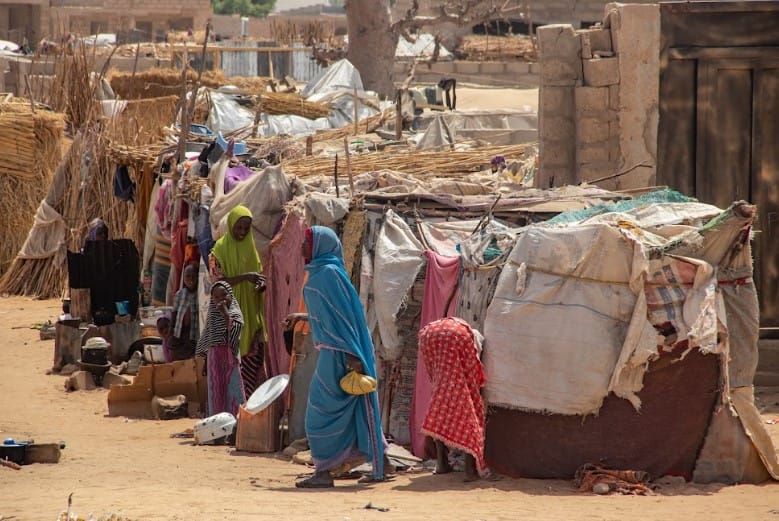 Over the past two decades, Sudan has been marked by significant conflicts that have profoundly impacted its society. The Darfur conflict began in 2003 and resulted in widespread violence and displacement as rebel groups clashed with the government over marginalization and resource control. The North-South Sudan civil war, lasting from 1983 to 2005, stemmed from ethnic and religious divisions, ultimately leading to the independence of South Sudan. Meanwhile, conflicts in South Kordofan, Blue Nile, Abyei, and eastern Sudan have caused ongoing violence, displacement, and tensions over political status, resources, and ethnic grievances. These conflicts have brought immense human suffering and continue to pose challenges to achieving lasting peace and stability in Sudan. In this latest chapter, two military factions — once political allies, now battlefield adversaries — are wrestling for control over the city and the country’s lucrative mineral resource exports, especially gold.
Several countries, including United Nations countries, Egypt, Russia, Ethiopia, Rwanda, Nigeria, and the United States, all have military assets in the country operating in close proximity to one another as the latest chapter of violence unfolds. Further escalation of the conflict would result in multiple warships tightly packed into the waters of the Red Sea– a recipe for disaster.
#4 – SYRIA
Over the past two decades, Sudan has been marked by significant conflicts that have profoundly impacted its society. The Darfur conflict began in 2003 and resulted in widespread violence and displacement as rebel groups clashed with the government over marginalization and resource control. The North-South Sudan civil war, lasting from 1983 to 2005, stemmed from ethnic and religious divisions, ultimately leading to the independence of South Sudan. Meanwhile, conflicts in South Kordofan, Blue Nile, Abyei, and eastern Sudan have caused ongoing violence, displacement, and tensions over political status, resources, and ethnic grievances. These conflicts have brought immense human suffering and continue to pose challenges to achieving lasting peace and stability in Sudan. In this latest chapter, two military factions — once political allies, now battlefield adversaries — are wrestling for control over the city and the country’s lucrative mineral resource exports, especially gold.
Several countries, including United Nations countries, Egypt, Russia, Ethiopia, Rwanda, Nigeria, and the United States, all have military assets in the country operating in close proximity to one another as the latest chapter of violence unfolds. Further escalation of the conflict would result in multiple warships tightly packed into the waters of the Red Sea– a recipe for disaster.
#4 – SYRIA
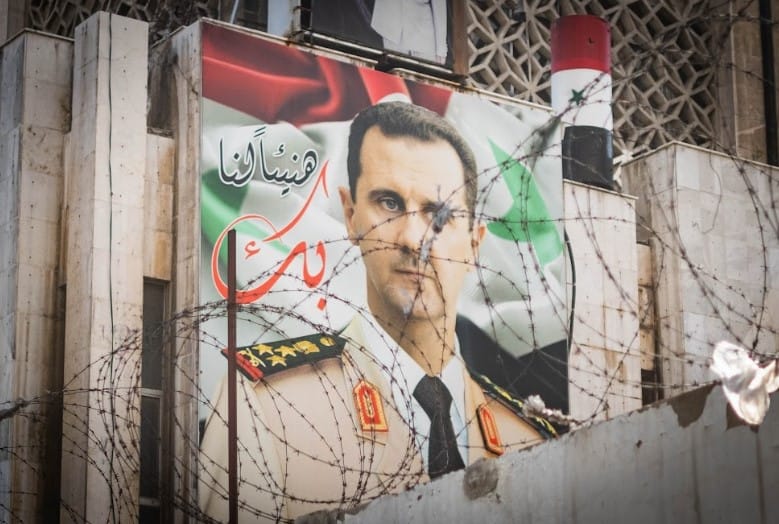 Syria has been experiencing a complex and multifaceted conflict that began in 2011. The conflict involves multiple parties, including the Syrian government, rebel groups, extremist organizations, and international actors. It has resulted in significant humanitarian crises, including mass displacement, casualties, and destruction of infrastructure. Efforts for a political resolution and peace negotiations have been ongoing, but the situation remains highly volatile. The President of Syria is Bashar al-Assad. He assumed office in July 2000, succeeding his father, Hafez al-Assad, who had been in power since 1971. The ongoing Syrian conflict has marked Bashar al-Assad’s presidency. Without delving too deeply into the conflict, Bashar al-Assad is supported by Russia, and the US has troops in the country.
Since the start of the Ukraine war, there has been an escalation of the conflict on Russia’s part. They have attempted to bait US jets into a dogfight and have repeatedly buzzed US defensive positions in neutral zones of the conflict. While Russia and the United States support forces on opposite sides of the Syrian conflict and are both allegedly fighting Islamic State militants. U.S. and Russian troops have not clashed directly, but that could change overnight. This dangerous hot zone would provide Russia with another front to distract the world from its invasion and war in Ukraine.
#5 – KOREAN PENINSULA
Syria has been experiencing a complex and multifaceted conflict that began in 2011. The conflict involves multiple parties, including the Syrian government, rebel groups, extremist organizations, and international actors. It has resulted in significant humanitarian crises, including mass displacement, casualties, and destruction of infrastructure. Efforts for a political resolution and peace negotiations have been ongoing, but the situation remains highly volatile. The President of Syria is Bashar al-Assad. He assumed office in July 2000, succeeding his father, Hafez al-Assad, who had been in power since 1971. The ongoing Syrian conflict has marked Bashar al-Assad’s presidency. Without delving too deeply into the conflict, Bashar al-Assad is supported by Russia, and the US has troops in the country.
Since the start of the Ukraine war, there has been an escalation of the conflict on Russia’s part. They have attempted to bait US jets into a dogfight and have repeatedly buzzed US defensive positions in neutral zones of the conflict. While Russia and the United States support forces on opposite sides of the Syrian conflict and are both allegedly fighting Islamic State militants. U.S. and Russian troops have not clashed directly, but that could change overnight. This dangerous hot zone would provide Russia with another front to distract the world from its invasion and war in Ukraine.
#5 – KOREAN PENINSULA
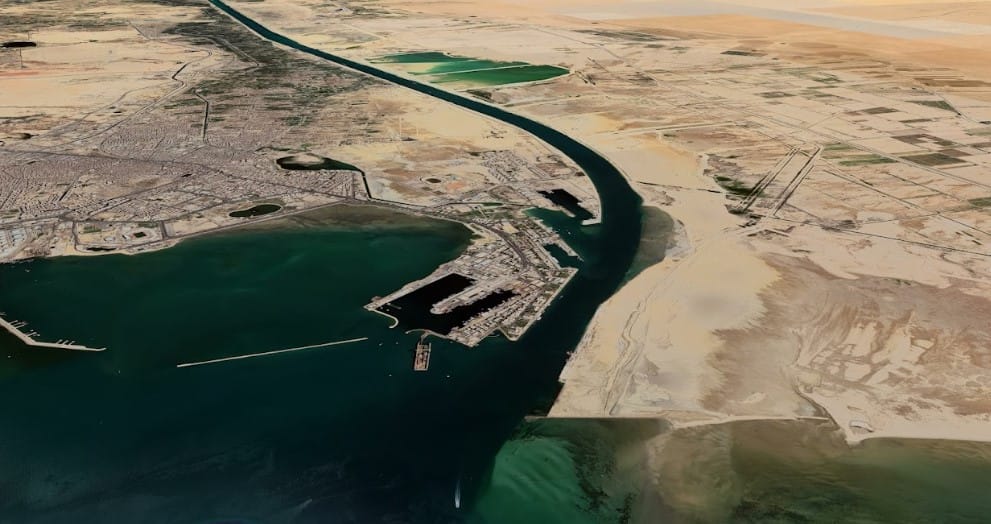 North Korea continues to launch missiles in the direction and over the air space of their neighbors. North Korea reportedly fired 26 projectiles, including short-range and intercontinental ballistic missiles, over 11 test launches in the first three months of this year. North Korea has a military nuclear weapons program and, as of early 2020, is estimated to have an arsenal of approximately 30 to 40 nuclear weapons and sufficient production of fissile material for six to seven nuclear weapons per year.
Kim Jong-un desires to be taken seriously and feared. Traditionally, China has held some sway over the dictator, but that has changed since North Korea started focusing so heavily on its nuclear program. North Korea is also heavily supporting Moscow in its war with Ukraine. If relations between China and Russia become strained or China feels that its control is slipping away to Russia, North Korea will turn towards Moscow for more significant support. That doesn’t bode well for the world.
#6 – CHINA/INDIA
North Korea continues to launch missiles in the direction and over the air space of their neighbors. North Korea reportedly fired 26 projectiles, including short-range and intercontinental ballistic missiles, over 11 test launches in the first three months of this year. North Korea has a military nuclear weapons program and, as of early 2020, is estimated to have an arsenal of approximately 30 to 40 nuclear weapons and sufficient production of fissile material for six to seven nuclear weapons per year.
Kim Jong-un desires to be taken seriously and feared. Traditionally, China has held some sway over the dictator, but that has changed since North Korea started focusing so heavily on its nuclear program. North Korea is also heavily supporting Moscow in its war with Ukraine. If relations between China and Russia become strained or China feels that its control is slipping away to Russia, North Korea will turn towards Moscow for more significant support. That doesn’t bode well for the world.
#6 – CHINA/INDIA
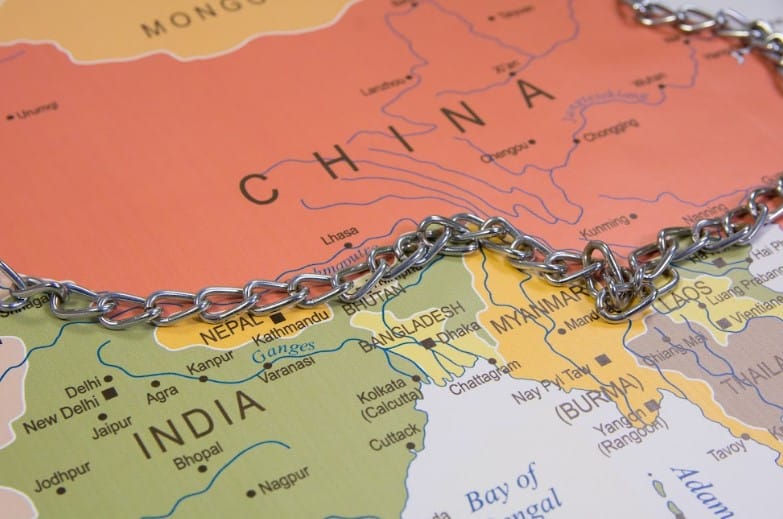 Kind of like that Ace hid deep within the deck, and probably more in the category of a lukewarm conflict, the China-India border conflict remains one to watch as a potential World War III maker. The sporadic conflict between China and India in the mountainous region of the Roof of the World continues, with both countries showing no signs of backing down. Although the territorial stakes are small and the terrain inhospitable, the conflict persists due to the importance of national prestige. The leaders of both nations have been unable to find a resolution, leaving open the possibility of escalation, which could either achieve their objectives or lead to a more devastating conflict.
So long as both India and China are profiting from lucrative deals and cheap oil and grain from Russia, the economics will prevent a larger escalation in this area. Both countries will ride the fence on many significant issues worldwide and close deals with the United States and Russia. Still, it’s a vital zone to monitor for changes, as they are nuclear-capable nations with 35% of the world’s population.
There are so many conflict zones right now where proxy wars are being actively waged, and it’s almost like a dress rehearsal for the future. The war in Ukraine is the most apparent global proxy war, but there are several fronts from Sudan to Syria, which the mainstream media probably isn’t giving you too much information on right now. They could all, however, ignite more significant conflicts. Many, myself included, would argue that we are all already engaged in a world war. You are always best served to prep as if war is imminent as there are many hotspots around the world currently on the verge of turning into a fire. I’ll post links to some practical videos to get you moving in your preparedness journey to insulate yourself should these events ramp up.
As always, stay safe out there.
Kind of like that Ace hid deep within the deck, and probably more in the category of a lukewarm conflict, the China-India border conflict remains one to watch as a potential World War III maker. The sporadic conflict between China and India in the mountainous region of the Roof of the World continues, with both countries showing no signs of backing down. Although the territorial stakes are small and the terrain inhospitable, the conflict persists due to the importance of national prestige. The leaders of both nations have been unable to find a resolution, leaving open the possibility of escalation, which could either achieve their objectives or lead to a more devastating conflict.
So long as both India and China are profiting from lucrative deals and cheap oil and grain from Russia, the economics will prevent a larger escalation in this area. Both countries will ride the fence on many significant issues worldwide and close deals with the United States and Russia. Still, it’s a vital zone to monitor for changes, as they are nuclear-capable nations with 35% of the world’s population.
There are so many conflict zones right now where proxy wars are being actively waged, and it’s almost like a dress rehearsal for the future. The war in Ukraine is the most apparent global proxy war, but there are several fronts from Sudan to Syria, which the mainstream media probably isn’t giving you too much information on right now. They could all, however, ignite more significant conflicts. Many, myself included, would argue that we are all already engaged in a world war. You are always best served to prep as if war is imminent as there are many hotspots around the world currently on the verge of turning into a fire. I’ll post links to some practical videos to get you moving in your preparedness journey to insulate yourself should these events ramp up.
As always, stay safe out there. 
